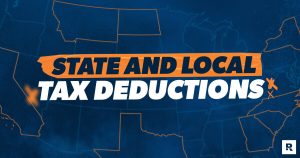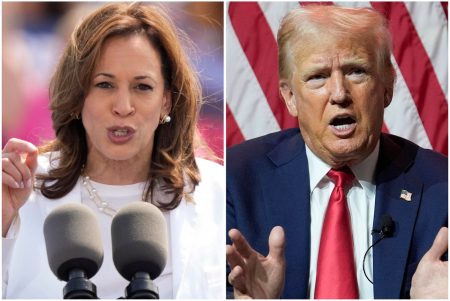Katie Butler, a 29-year-old in Dallas, drank heavily throughout college and the early years of her career. She didn’t think about the cost at the time, only that she was treating herself after a week of classes or a long work day. But when she does the math today, she realizes she was spending up to $1,000 on alcohol every month over the course of eight years.
Now, two years after she quit drinking, Butler has re-evaluated how she spends her discretionary funds. She’s using the money she would have spent on alcohol on self-care and gym memberships, and she’s saving for furniture and updates for her home.
Former drinkers like Butler have already successfully made a big lifestyle change. Without that expense, they’re using the extra money to save more and build new financial habits.
Cutting expenses is a common way people can save more — and Americans’ savings need a boost. Only 30 percent of U.S. adults had more emergency savings in January 2024 than in January 2023, according to Bankrate’s Emergency Savings Report. Another 32 percent said their savings declined in that time, while 29 percent said it stayed about the same amount.
No matter the reason, if you’re drinking less or you’ve quit completely, you may realize you now have more money in your checking account. This is how you can use that extra money to build new financial habits for the future.
The cost of drinking can add up quickly, so if you can cut down or stop altogether, you may be surprised by how much money you can save.
— Alex Gailey, Bankrate Lead Data Reporter
Key Bankrate insights on Americans’ financial health and savings
- Most Americans are trying to build savings and pay down debt. 36% of U.S. adults are focused on both increasing emergency savings and paying down debt, according to Bankrate’s Emergency Savings Report. 28% of people are focused more on building their emergency savings and 25% are focused more on paying down debt.
- It’s unlikely people would pay for an emergency expense from savings. Only 44% of U.S. adults would pay a $1,000 emergency expense from their savings, according to Bankrate’s Emergency Savings Report. Instead, 21% would finance the purchase with a credit card and pay it off over time, 16% would reduce their spending on other things, 10% would borrow from family or friends and 4% would take out a personal loan.
- Around half of credit card holders have debt from it. 49% of credit card holders are carrying a credit card balance from month to month, according to Bankrate’s Credit Card Debt Survey, up from 39% in 2021.
Drinking costs Americans over $700 a year on average
The cost of drinking adds up very quickly. In college, Butler would go out with friends regularly, typically having one or two drinks with dinner, before bar-hopping and ordering a third, fourth or fifth drink. As an adult, she developed a taste for $20 Old Fashioneds and bottles of cabernet that could cost anywhere from $60 to $100.
“That’s thousands of dollars, either mine or my parents’ money, I was just lighting on fire,” Butler says.
Nearly two-thirds (62 percent) of Americans drank alcohol in 2023, according to Gallup. The wide range of drinking habits in the U.S., from buying an occasional bottle of wine from the store to going out nightly, means actual alcohol spending will vary widely from person to person. But high alcohol prices mean frequent drinkers can spend more than they expected.
On average, Americans who consumed alcohol in 2021 purchased 850 drinks that year, according to the latest data available from the National Institute on Alcohol Abuse and Alcoholism (NIAAA). (The NIAA tracks alcohol purchased from bars, restaurants, online stores and brick-and-mortar stores, and includes all alcohol, including beer, wine and liquor.)
The average drinker spent $701.78 on beer and wine alone in 2021, according to a Bankrate analysis of U.S. Bureau of Labor Statistics (BLS) and NIAAA data:
Average spending on alcohol per American drinker¹ in 2021
| Drink | Average price per serving in 2021 | Average number of servings bought per drinker in 2021 | Total average spending per drinker in 2021 |
|---|---|---|---|
| Wine, red and white² | $1.95 | 149 | $290.64 |
| Malt beverages³ | $1.15 | 359 | $411.14 |
1: 14 years or older
2: Excluding sparkling, dessert and other fruit wines.
3: Including beer, sake and cider, not including beverages sold with large deposits, such as kegs and growlers.
Source: NIAA, BLS (wine and malt beverages)
Cutting unwanted expenses, like alcohol, frees up money to use elsewhere in your budget. If you’re no longer spending hundreds — or thousands — of dollars a year on alcohol, you may want to consider using those funds to boost your emergency savings. An extra $700 is a great start to a new savings account.
“Having an emergency fund increases your odds of long-term financial stability,” Bankrate Lead Data Reporter Alex Gailey says. “An emergency fund can be a lifeline if you experience a sudden, unexpected expense, like a pricey medical bill, car repair or even a surprise job layoff. Unless you can borrow money from family or friends, your emergency fund is the one thing standing between you and taking on debt if disaster strikes.”
Financial advisors recommend keeping three to six months’ worth of expenses in an emergency savings account, but Gailey notes that might be unrealistic in today’s economic climate. Still, any savings can help for the future.
Even if you’re trying to save, it’s important to leave room in your budget for discretionary spending
If you recently cut back on alcohol spending or a similar expensive habit, Gailey recommends setting a time and date to edit your budget (or, if you don’t have one yet, build one for the first time).
Make a budget easily with these free apps
Need a little more help learning how to budget? Free apps (or even a simple spreadsheet template) can help you see your bills, save money automatically and track spending.
Learn more
One of the most important steps in making a budget is choosing your spending priorities, like how Butler decided her priority was feeling more comfortable in her house, instead of going out frequently.
“I had to sit down and be really honest with myself about what made me feel better and what made me happy,” Butler says. “It made me realize what was important. What am I going to spend my money on that’s important to me? What do I need to feel like my best self?”
Living within your means is essential to achieving your financial goals, Gailey says, but she also advises setting aside money for fun spending to make your financial journey more sustainable. Cutting discretionary spending completely isn’t realistic for most people. Instead, choose your most important spending categories and cut spending in other places.
How to choose what to spend discretionary funds on
- Group your spending in categories, such as hobbies, fitness, eating out and entertainment. Choose one or two categories that are most important to you.
- Make a plan to cut down (or eliminate) spending on one category that’s least important. Put the money you would have spent automatically into savings every pay period.
- If you’re worried about cutting social activities, consider teaming up with friends to turn saving into a friendly competition. Make a plan together on what you’ll do with the money you’re saving.
- Don’t forget to check recurring charges, and consider canceling what you haven’t used in at least a month, like streaming services, gym memberships and meal kits.
Changing your spending habits is a big task, and it’s worth feeling proud of. Celebrate your accomplishments by saving and paying down debt — just don’t forget to treat yourself a little, too.
FAQs
-
An emergency fund is typically three to six months of expenses. Try to set aside some money every month, if it’s only a small amount, to reach your goal.
-
Creating a budget, paying down high-interest debt and saving for the future will set you up for financial success later in life. Start small and celebrate your wins along the way.
-
Set an automatic transfer to your savings account once a month. Consider a high-yield savings account or other high-interest savings account to collect compound interest, and watch your money grow.
-
The study on emergency savings (that was conducted January 2024) was conducted by SSRS on its Opinion Panel Omnibus platform. The SSRS Opinion Panel Omnibus is a national, twice-per-month, probability-based survey. Data collection was conducted from January 19 – January 21, 2024 among a sample of 1031 respondents. The survey was conducted via web (n=1001) and telephone (n=30) and administered in English (n=1005) and Spanish (n=26). The margin of error for total respondents is +/- 3.6 percentage points at the 95% confidence level. All SSRS Opinion Panel Omnibus data are weighted to represent the target population of U.S. adults ages 18 or older.
The study on emergency savings (that was conducted December 2023) was conducted by SSRS on its Opinion Panel Omnibus platform. The SSRS Opinion Panel Omnibus is a national, twice-per-month, probability-based survey. Data collection was conducted from December 15 – December 17, 2023, among a sample of 1036 respondents. The survey was conducted via web (n=1006) and telephone (n=30) and administered in English (n=1010) and Spanish (n=26). The margin of error for total respondents is +/-3.6 percentage points at the 95% confidence level. All SSRS Opinion Panel Omnibus data are weighted to represent the target population of U.S. adults ages 18 or older.
Bankrate commissioned YouGov Plc to conduct the survey on credit card debt. All figures, unless otherwise stated, are from YouGov Plc. Total sample size was 2,350 U.S. adults, including 1,796 cardholders and 873 who carry a balance on their credit card(s). Fieldwork was undertaken between November 28–30, 2023. The survey was carried out online and meets rigorous quality standards. It employed a non-probability-based sample using both quotas upfront during collection and then a weighting scheme on the back end designed and proven to provide nationally representative results.
Read the full article here










